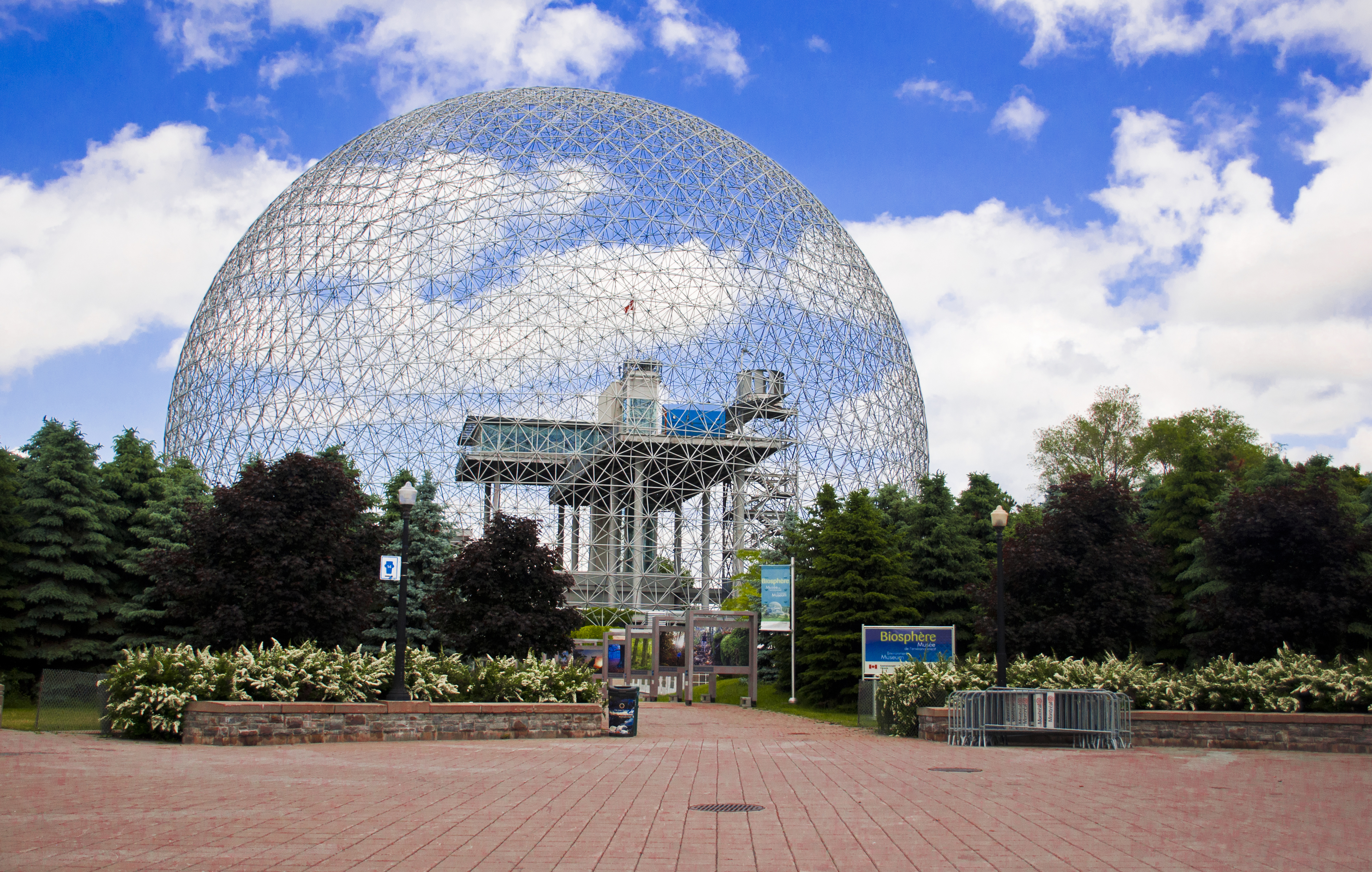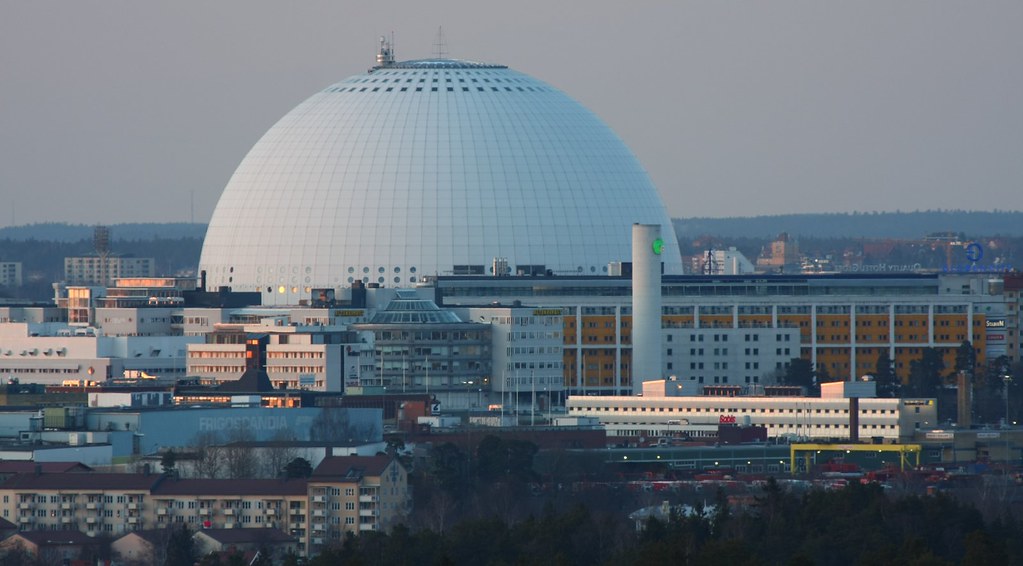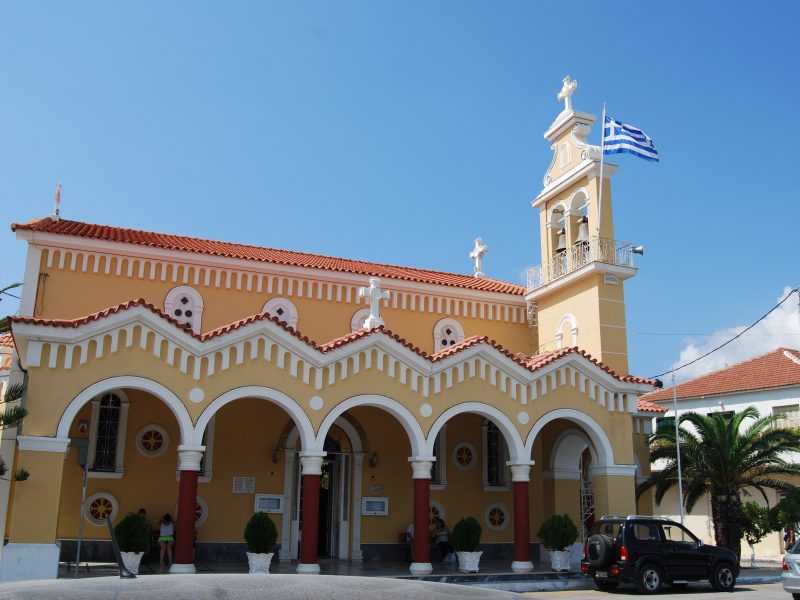
Cornerless Architecture: 6 Spherical Buildings that Really Exist
Over the centuries of development of engineering thought, a huge number of spherical buildings and domes have been created all over the world. Numerous modern architectural structures have successfully proven that a building may not have corners at all. Cultural and shopping centers, temples, cinemas in the form of huge balls shock our imagination.
Some of them have a faceted facade, some are smooth, but each building necessarily becomes a kind of architectural icon due to its unique geometry. Let’s look at some incredible spherical buildings around the world, and you will certainly want to see them with your own eyes.
By the way, we recommend renting a car to make your tour of spherical buildings much more exciting. If traveling with your family, then rental car for 7 passengers is best suited as it has a fairly spacious interior. Don’t know where to pick up such a car? At Rental24H.com choosing the best rental car for 7 passengers is not difficult, since you can compare offers in many ways. Cars are available almost all over the world so you can be sure that you will get to the following unique spherical buildings quickly and easily.
The Biosphere, Environment Museum – Montreal, Canada

The museum, dedicated to the environment and water resources, is located in the Jean-Drapeau Park on the Saint Helen’s Island. This construction was originally the US pavilion at Expo-67.
The pavilion, which looked like a big soap bubble, made a tremendous impression and then it was decided to keep it. The outer shell, wrapped the museum, which appeared inside it, is a geodesic dome with a diameter of 76 meters, assembled from steel rods. In 1990, the former pavilion was turned into the museum and after 5 years it again received visitors in a new quality.
Bolwoningen Community – Den Bosch, Netherlands

This experimental housing subsidized by the Dutch government has become the hallmark of a small town. 50 spheres similar to alien ships are located near an artificial lake. Each house basically has a cylinder, onto which a balloon with a diameter of 5.5 meters is hoisted. Despite that housing is not very suitable because of a small size, people live there. Such houses are especially attractive to bohemians and students who want to live in a unique setting. In addition to its non-conventional form, houses are also notable for the fact that they are easy to dismantle and transport to other places.
La Seine Musicale – Paris, France

The Philharmonic was built on Seguin Island in the middle of the Seine, on the site of the former Renault plant. The company inherited an extended pedestal for a sphere consisting of a wooden patterned grid and an overhanging sail made of solar panels.
The sail moves along the rails after the sun. Architect Shigeru Ban remained faithful to the traditions of using wood in his buildings, and the use of solar panels and extensive landscaping added to the concert complex even more environmental friendliness.
The Joe and Rika Mansueto Library – Chicago, USA
 The architect was faced with the task of creating the most transparent, functional space, while not occupying a vast territory and not covering the famous Henry Moore’s “Nuclear Energy” sculpture, created in honor of the historic moment – the first nuclear reaction that was carried out there in 1942 in Chicago University by Nobel laureate Enrico Fermi.
The architect was faced with the task of creating the most transparent, functional space, while not occupying a vast territory and not covering the famous Henry Moore’s “Nuclear Energy” sculpture, created in honor of the historic moment – the first nuclear reaction that was carried out there in 1942 in Chicago University by Nobel laureate Enrico Fermi.
The major designer of the library decided to remove underground the main treasure of the library – a high-tech 5-floor book depository with 3.5 million books, and cover the aboveground part with a reading room for 180 visitors with a dome.
The structure is a grid of steel tubes with cells. At the bottom, the glass is completely transparent, and on the upper tiers in the cells it’s fritted and reflects up to 70% of solar heat, which saves the cost of air conditioning. The columns, in addition to the supporting function, took on the task of hiding the ventilation and heating systems.
Ericsson Globe – Stockholm, Sweden

Ericsson Globe is considered to be the world’s largest spherical building – it can accommodate up to 16 thousand visitors at once. The diameter of the Globe Arena is 110 meters and its height is 85 meters. The huge dome is based on 48 curved steel columns, the inner shell is aluminum grating, and the outer one is made from very thin metal plates laid on an aluminum grating.
Hockey matches, concerts of celebrities are constantly held there, and, in addition, Ericsson Globe boasts a very original viewing platform, moving from one side of the building to the other.
Millennium Dome – London, Great Britain
x
This grandiose building was erected for the Millennium Experience exhibition, which was dedicated to the celebration of the arrival of the third millennium. After the exhibition closed, the Dome became an O2 entertainment complex.
The structural features of the building are as follows: the dome is supported by 12 hundred-meter masts, from which cables with a total length of more than 70 kilometers hang. It’s the cables that give the Millennium Dome the necessary shape and support the entire construct. The coating is made of the lightest white fiberglass with Teflon.
An interesting fact is that a prime meridian passes through the western edge of the Millennium Dome.
Post a Comment
You must be logged in to post a comment.






3disabilities
3surreptitious
2bedclothes
2adverbs
buy the help
writing dissertation https://professionaldissertationwriting.org/
dissertation writing service
dissertation defense https://helpwithdissertationwritinglondon.com/
ucl dissertation help
dissertation methodology https://dissertationwritingcenter.com/
dissertation definition
example of dissertation https://dissertationhelpexpert.com/
dissertation writing and editing
dissertation writing software https://accountingdissertationhelp.com/
dissertation handbook
mba dissertation writing services https://examplesofdissertation.com/
write a dissertation abstract
cheap dissertation help in los angeles https://writing-a-dissertation.net/
masters dissertation writing services uk
uk dissertation writing help quotes https://bestdissertationwritingservice.net/
dissertation writing guide
writing editing service https://businessdissertationhelp.com/
write my dissertation
dissertation help service quality https://customdissertationwritinghelp.com/
uk dissertation help
law dissertation writing service https://writingadissertationproposal.com/
writing dissertation proposal
dissertation help service https://dissertationhelpspecialist.com/
dissertation handbook
dissertation help online free https://dissertationhelperhub.com/
dissertation help galway
how to write a dissertation https://customthesiswritingservices.com/
ti casino online
miami club casino online https://download-casino-slots.com/
online casino greece
mohegan sun casino online https://firstonlinecasino.org/
double down casino online
tropicana online casino promo code https://onlinecasinofortunes.com/
online casino game
ocean resort casino online https://newlasvegascasinos.com/
pala online casino
legit online casino https://trust-online-casino.com/
my choice online casino
casino online https://onlinecasinosdirectory.org/
sweden online casino
online casino betting https://9lineslotscasino.com/
spain online casino
instant withdrawal online casino usa 2020 https://free-online-casinos.net/
casino online game
las vegas online casino https://internet-casinos-online.net/
online casino best
party casino online nj https://cybertimeonlinecasino.com/
four winds online casino
real money casino online no deposit https://1freeslotscasino.com/
online casino texas
el royale online casino https://vrgamescasino.com/
online casino free
no deposit bonus codes for online casino https://casino-online-roulette.com/
best online casino games
sugarhouse casino online nj https://casino-online-jackpot.com/
bravado online casino
real cash online casino https://ownonlinecasino.com/
online casino gambling
online sweepstakes casino real money https://all-online-casino-games.com/
online casino no deposit bonus
gta online casino heist payout https://casino8online.com/
buy vpn subscription
vpn app https://freevpnconnection.com/
buy netgear vpn client
free vpn windows 10 https://shiva-vpn.com/
free online vpn browser
best vpn for pc free download https://freehostingvpn.com/
free vpn trial
vpn free google chrome https://imfreevpn.net/
free vpn client
vpn chrome extension free https://superfreevpn.net/
business vpn solutions
hotspot vpn https://free-vpn-proxy.com/
victim met killer on gay dating site new york
amateur after dating gay sex https://gay-singles-dating.com/
gay dating websites dallas
local gay dating https://datinggayservices.com/
sites online dating
online dating service https://freephotodating.com/
yahoo dating personals
100% free dating sites https://onlinedatingbabes.com/
best dating apps
free meeting online https://adult-singles-online-dating.com/
meet single women
plenty fish free dating https://adult-classifieds-online-dating.com/
free dating sites women
skip the games dating site free https://online-internet-dating.net/
chat with singles
searchingforsingles https://speedatingwebsites.com/
chinese dating show
single women local https://datingpersonalsonline.com/
village ladies totally free
connecting singles games https://wowdatingsites.com/
adlt dating
datjng sites https://lavaonlinedating.com/
single free dating sites for sex
free adult dating https://freeadultdatingpasses.com/
subtle asian dating
asian online dating https://virtual-online-dating-service.com/
lstill18 single women
dating websites https://zonlinedating.com/
date free internet
find international singles dating https://onlinedatingservicesecrets.com/
free online casino games win real money no deposit
golden nugget online casino pa https://onlinecasinos4me.com/
online casino no deposit sign up bonus
casino royale full movie online free https://online2casino.com/
italy online casino
indiana online casino https://casinosonlinex.com/
free gay chat 803 area code
gay video chat sites https://newgaychat.com/
gay chat webcam room facebook free
chicago gay chat rooms free https://gaychatcams.net/
gay sex chat no registration
gay pnp chat free https://gaychatspots.com/
cleveland gay chat line numbers
gay web cam chat room https://gay-live-chat.net/
chat en vivo gay
gay mature chat https://chatcongays.com/
x4 gay video chat
gay chat roulette chat https://gaychatnorules.com/
free asain chat lines gay
gay chat rooms no registration https://gaymusclechatrooms.com/
gay web chat rooms
chat gay con camara https://free-gay-sex-chat.com/
gay sex cam chat mobile android
gay sissie video chat https://gayinteracialchat.com/
gay men chat roon 91764
gay chat men’s room https://gaymanchatrooms.com/
paper writing service college
paper writing services best https://term-paper-help.org/
customized paper
write my paper apa format https://uktermpaperwriters.com/
buy college paper
custom written papers https://paperwritinghq.com/
pay to do my paper
custom papers for college https://writepapersformoney.com/
write my paper for me cheap
white paper writing services https://write-my-paper-for-me.org/
write my paper
buy cheap papers https://doyourpapersonline.com/
help writing paper
pay someone to do my paper https://top100custompapernapkins.com/
need someone to write my paper for me
how to write my paper https://researchpaperswriting.org/
write my psychology paper
custom paper services https://cheapcustompaper.org/
apa papers for sale
professional paper writer https://writingpaperservice.net/
buy college papers
buy custom paper https://buyessaypaperz.com/
where can i buy resume paper
do my papers https://mypaperwritinghelp.com/
papers writing help
custom paper https://papercranewritingservices.com/
buy cheap papers
write my paper for me https://premiumpapershelp.com/
paper writers college
white paper writing services https://ypaywallpapers.com/
pay to write papers
custom written papers https://studentpaperhelp.com/
3christina
3partner
coursework masters
database coursework https://brainycoursework.com/
coursework resources
coursework service https://courseworkninja.com/
coursework resources
coursework online https://writingacoursework.com/
coursework research
coursework only degree https://mycourseworkhelp.net/
custom coursework writing service
coursework moderation https://courseworkdownloads.com/
cpa coursework
coursework planner https://courseworkinfotest.com/
design coursework
cpa coursework https://coursework-expert.com/
coursework resources
coursework writing service https://teachingcoursework.com/
help with coursework
coursework writing service https://buycoursework.org/
coursework science
coursework uk https://courseworkdomau.com/
totally free dating sites no fees ever
dating sites our time https://freewebdating.net/
12 single dating site
plenty fish https://jewish-dating-online.net/
dating meet singles
senior dating site https://free-dating-sites-free-personals.com/
dating free site
freetalk45 https://sexanddatingonline.com/
fuck2date69
bdsm dating https://onlinedatingsurvey.com/
english dating sites
online dating no info https://onlinedatingsuccessguide.com/
no email dating site
japanese dating sites https://onlinedatinghunks.com/
top online meeting sites
free dating apps no fees https://datingwebsiteshopper.com/
free single dating service
our time dating website login https://freedatinglive.com/
online site
chat singles https://freewebdating.net/